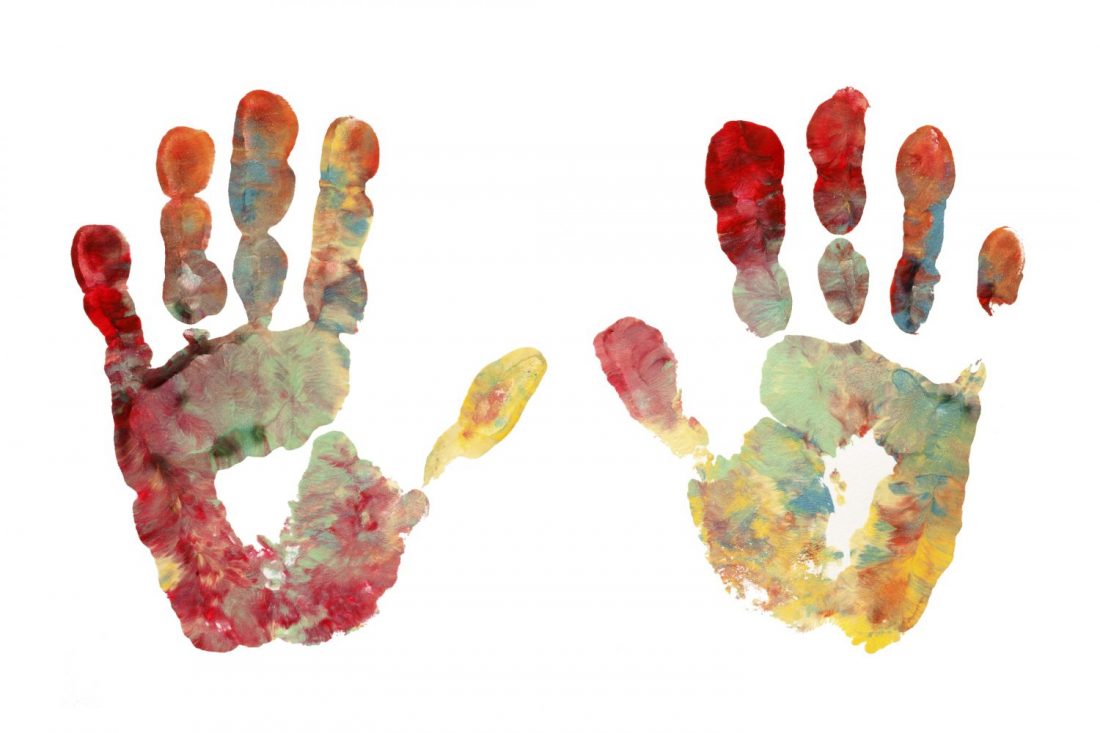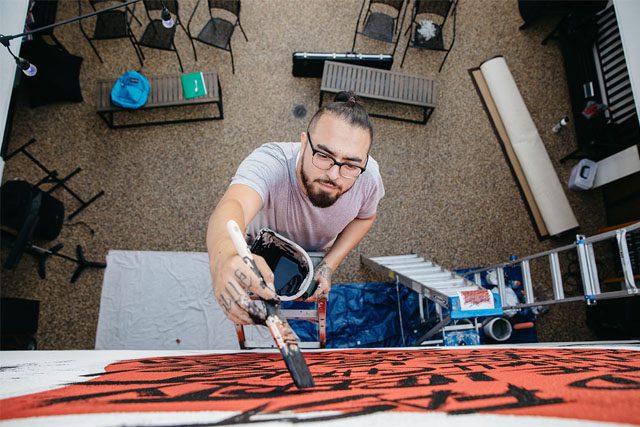Art therapy communicates symbolically to aid in recovery.
“Can I do this? What I see in my mind, what I feel in my heart, will it show up?” An artist stares at her canvas uncertain yet excited. She longs to fill the empty space with vivid colors and artful shapes that perfectly depict her struggles. Then, a breakthrough: “No more thinking. I am powerless over my addiction. Of course, I can’t completely control what I put on this canvas, either.”
Much as she confronted her fear of the unknown in entering substance abuse treatment, she now dips the wide brush into a random color on her palette. Another journey begins. This journey, likewise often treacherous, is also enlightening, pleasurable, calming, and can offer insights in unexpected ways. Personal expression through drawing, painting and sculpting embodies the inner world of the artist. It opens up that world and draws out responses in ways not possible with words alone.
What is art therapy? And why is it useful for people with addiction? Most of us are familiar with creating art, knitting or crocheting, going to an art show, attending theater, and listening to music. We know these activities are relaxing, fun and enjoyable ventures. Some people recognize that engaging in the arts can have a self-soothing quality, a feeling of release from built-up tension, and a way to document an experience or feeling.
Watch “Art Therapy Has Many Faces” (Expressive Media, 2004), a documentary on the history of art therapy, including art’s power to heal, and the benefits of art therapy in diverse settings including prisons and hospitals.
Try your own art therapy. Think of four ways you find peace or joy and create a postcard for each. Use symbols, pictures, words, and colors with paint, magazine clippings, drawings and so on so that each postcard is a work of art. Display the cards in various places—at home, work, in your car—to remind you to find peace and joy each day.
Despite the benefits, those in treatment for substance abuse are typically resistant to art therapy. Nonetheless, those who protest the most often become the biggest fans, often asking for more art materials and additional experiences during their treatment.
Why do substance abuse patients grow to love art therapy? According to Neil Springham, chair of the British Association of Art Therapists and head of art therapy at Oxleas, the art image goes beyond simply being a mirror of an individual. It reflects back not only our internal concerns, but also our hidden or underutilized strengths. It offers a new way of looking at an old, persistent or “stuck” situation—like the cycle of addiction.
Art therapists are master’s and doctoral level professionals educated in both art and psychology. They receive clinically supervised work experience to become registered as an art therapist, and are then eligible to become board certified through a national exam. Art therapists use their skills and knowledge of visual arts in their therapy and counseling practices to help people of all ages and abilities work through a trauma, experience symptom relief, identify triggers and stressors, envision new possibilities, and find their voice.
Art has the power to bypass a person’s defenses, which is particularly helpful with those in recovery from addiction as many experience related defenses and denial. When the artist creates something his or her internal world is naturally revealed. By creating a piece, the artist can then recognize, often evocatively, how their drawing or sculpture expresses what they have been unable to allow themselves to feel or even recognize as it was masked by addiction.
This form of therapy allows a person to overcome shame and foster a spiritual renewal. Creative engagement in art therapy allows for reflection and a connection with inner strength, joy, and belief in something greater than one’s self.
What is art therapy?
The American Art Therapy Association defines art therapy as “a mental health profession in which clients, facilitated by the art therapist, use art media, the creative process, and the resulting artwork to explore their feelings, reconcile emotional conflicts, foster self-awareness, manage behavior and addictions, develop social skills, improve reality orientation, reduce anxiety, and increase self-esteem. A goal in art therapy is to improve or restore a client’s functioning and his or her sense of personal well-being. Art therapy practice requires knowledge of visual art (drawing, painting, sculpting, and other art forms) and the creative process, as well as of human development, psychological, and counseling theories and techniques.”
When is art therapy used?
Whether an individual enters treatment in a detox center, a residential treatment facility or an outpatient clinic, art therapy can be most effective in meeting the individual where he is. While in detox, the focus is on safe, medical stabilization. This setting isn’t necessary for every individual wanting to work toward sobriety, however if detoxification is indicted, art therapy can play a role in easing the often difficult physical symptoms associated with it.
In residential treatment, group therapy is likely to be one component of the program. Groups can be helpful for people to see they are not alone, have common struggles with other group members, and can be a great source of support.
Art therapy is a particularly useful approach to substance abuse treatment because of its broad application in clinical settings and with a range of populations including adolescents, adults and older adults seeking substance abuse treatment. Visual expression deepens the work an individual can do by connecting the internal, nonverbal, creative world with the external, verbal and intellectual world.
How to find an art therapist?
The American Art Therapy Association (arttherapy.org) maintains a list of qualified art therapists in your area through the “Find a Therapist” link. You will also find helpful information about art therapy and the education, research and advocacy happening within the field.
By Mary Ellen Ruff, a board certified art therapist and a credentialed professional member of the American Art Therapy Association.

















